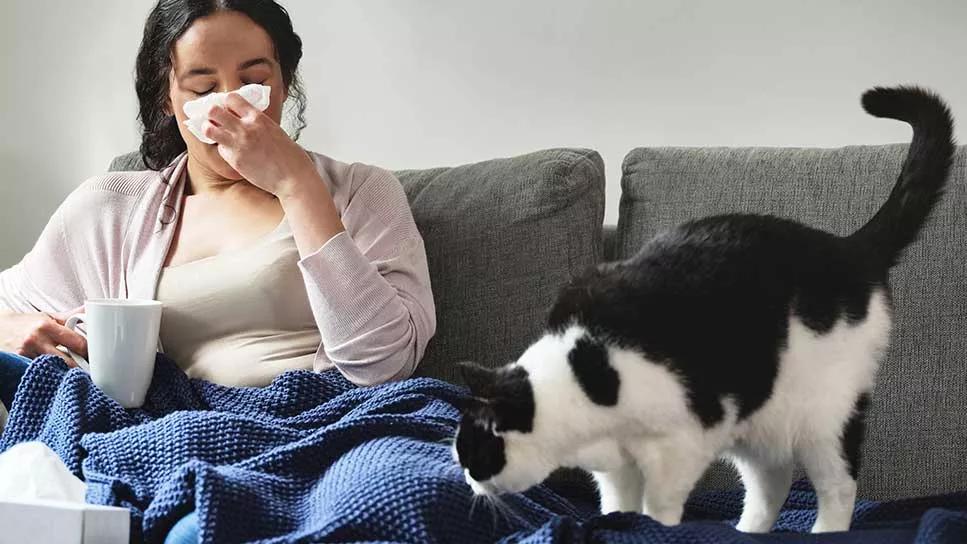Indoor allergens know no season!

Just thinking about ragweed pollen may make your eyes itch and bring on a sneeze. (ACHOO!) Ditto for tree pollen, grass pollen and other allergy triggers that float around the great outdoors in spring, summer and fall.
Advertisement
Cleveland Clinic is a non-profit academic medical center. Advertising on our site helps support our mission. We do not endorse non-Cleveland Clinic products or services. Policy
So, when freezing winter temperatures halt pollen production and send you indoors, you should be able to breathe a non-stuffy sigh of relief, right?
Not necessarily. It turns out that being cooped up in a house can make allergy symptoms worse for some people. Let’s learn more about allergens lurking in your home from allergist Sandra Hong, MD.
What people call “winter allergies” doesn’t involve sneezing at the first sight of snow. It’s more a reference to allergy-driven sniffles and sneezes that come when you spend more time inside your home.
In truth, “winter allergies” are nothing more than perennial indoor allergies that you’re more exposed to during certain times of the year, says Dr. Hong.
If you live in a cold-weather climate, that’s winter. But those same allergy issues can make your life miserable if you live in an area where scorching summertime temperatures keep you inside for months.
Surveys show that most people spend about two and a half hours a week cleaning inside their homes. Despite all that elbow grease, it’s safe to say that folks miss a few spots when it comes to eliminating allergens.
Research shows that more than 99% of homes have at least one main allergen always present. Most homes (74.6%) have between three and six allergens present.
Advertisement
Dr. Hong says the most common culprits behind winter allergies include:
Classic symptoms of indoor allergies include:
Indoor allergies can send you regularly scrambling for a box of tissues. Ditto for the common cold. So, how do you tell the two apart given the similarity in symptoms?
A cold typically lasts a few days to a week, with symptoms peaking in the middle of that period before slowly disappearing. Facial pain, headaches, fatigue and a fever can be part of the package.
Allergies, on the other hand, tend to linger longer without hitting the same extremes as a cold, clarifies Dr. Hong.
Eliminating ALL allergens from your home borders on the impossible, as the research noted shows. But there are things you can do to minimize indoor allergens and their annoying effects, says Dr. Hong.
Here are eight ways to help keep your winter allergies from flaring up:
Advertisement
Learn more about our editorial process.
Advertisement

Drowsiness is a side effect of inflammation, disrupted sleep and, sometimes, your allergy medicine

If you’re sensitive to aspirin or other salicylates, limiting exposure is the best remedy

Mold exposure can cause allergic reactions, asthma and skin rashes

If allergies have you coughing and sniffling all night, try showering before bed, keeping the windows closed and propping your head up

If allergies make your mornings a slog, consider closing the windows and showering at night

When the trees start to bloom, your allergies can come to life — medications, closing the windows and keeping clean can help

Water, touch, sunlight, physical activity and cold are some of the rarest allergies

Autumn allergens typically begin to bloom — and release their pesky pollen — around August

If you’re feeling short of breath, sleep can be tough — propping yourself up or sleeping on your side may help

If you fear the unknown or find yourself needing reassurance often, you may identify with this attachment style

If you’re looking to boost your gut health, it’s better to get fiber from whole foods